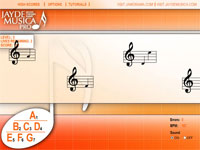Kid's Quest: Choosing the Right Time for Piano Lessons
>> Dont Even Think Of Trying Other Prodicts untill You Read This <<
To this day, I feel deprived that my parents didn't sign me up for piano lessons. You see, I have two sisters who are considerably older than I am (ten and 14 years older, respectively). They both learned to play the piano, and my parents had a piano in the house until the time I was six years old. At that point, they sold the piano and, alas, my potential piano lessons went with out the door with the instrument. In retrospect, I imagine they felt as though they'd "been there, done that" with my sisters, and that another round of piano practices and recitals was more than they could bear. Still, to this day, I wish I had learned to play the piano.
Many parents embrace the idea of piano lessons for their children, but wonder when beginner piano lessons are appropriate. Is it when their prodigy-to-be bangs out his first tune on his toy piano? Is it once he's show an interest in an educational toy or an educational game? Is it once he's started school?
Experts generally agree that parents should take their child's lead in deciding when beginner piano lessons are appropriate. If a child shows an interest in her toy piano, that may be an early indicator. A child who sits down at her aunt's piano and bangs out notes at every opportunity is one who may be ready for piano lessons.
Ultimately, a child's experience of piano lessons - just like the experience of playing with an educational toy or educational game - should be one that's enjoyable. He should be old enough to understand that there is a level of commitment necessary in learning to play the piano, and to understand that beginner piano lessons are just that - for beginners. Once he can see that his skills improve with practice, he's likely to more thoroughly enjoy his piano lessons.
Parents can contribute to their child's feels of satisfaction about her progress by encouraging her at every opportunity. Applaud her initiative in practicing, attend her recitals, and - if you've ever had the urge - consider taking beginner piano lessons with her. Family involvement in her piano lessons will go far in giving her the motivation to continue playing.
If a child does lose interest in piano lessons after a time, though, it doesn't pay for parents to force their child to continue taking piano lessons. Instead, they should encourage him to continue to enjoy music in its infinite variety.
One of the worlds MOST popular internet marketing companies on the web. Visit this Music Website and Majon's Music directory.
Labels: chord_learn_music_piano_piano_play_presto_read, free_learn_lesson_online_piano, learn_music_piano_read

